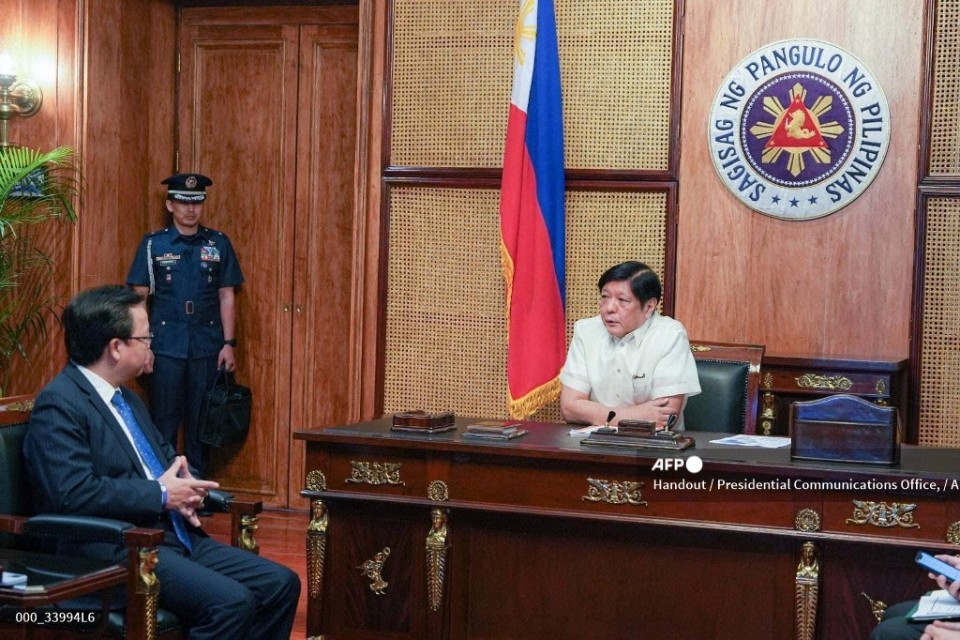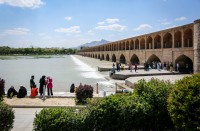
Manila, Philippines | AFP | Tuesday 2/14/2023
Philippine President Ferdinand Marcos summoned Beijing’s ambassador Tuesday to express “serious concern” after a Chinese security vessel was accused of using a military-grade laser light against a Philippine patrol boat in the disputed South China Sea.
The confrontation marks an escalation in the diplomatic row, after the Philippine foreign ministry earlier filed a protest to the Chinese embassy condemning the “aggressive” actions of the Chinese coastguard vessel that it said left Filipino crew members temporarily blinded.
Marcos confronted Chinese Ambassador Huang Xilian on Tuesday “over the increasing frequency and intensity of actions by China against Philippine Coast Guard and our Filipino fishermen”, spokeswoman Cheloy Velicaria-Garafil said.
The Chinese embassy said the men had discussed, among other things, how to “properly manage maritime differences between China and the Philippines”.
The laser incident happened on February 6 nearly 20 kilometres (12 miles) from Second Thomas Shoal in the Spratly Islands, where Philippine marines are stationed in a derelict navy ship grounded to assert Manila’s territorial claim in the waters.
It is the latest in a series of maritime incidents between the Philippines and China, which claims sovereignty over almost the entire South China Sea and has ignored an international court ruling that its claims have no legal basis.
Chinese foreign ministry spokesman Wang Wenbin insisted Tuesday that the Chinese Coast Guard personnel had “operated with professionalism and restraint”.
Wang said the countries had been in contact via a hotline set up between their respective foreign ministries to discuss maritime issues.
Days before the latest incident, the United States and the Philippines agreed to resume joint patrols in the sea, and struck a deal to give US troops access to another four military bases in the Southeast Asian country.
US State Department spokesman Ned Price on Monday criticised the Chinese Coast Guard’s actions as “provocative and unsafe”.
“The United States stands with our Philippine allies in the face of the People’s Republic of China Coast Guard’s reported use of laser devices against the crew of a Philippine Coast Guard ship,” Price said.
The Philippine patrol boat was supporting a “rotation and resupply mission” for the marines in Second Thomas Shoal when the Chinese vessel pointed the laser light at them twice, the Philippine Coast Guard said Monday.
The Chinese boat also issued illegal radio challenges and undertook dangerous manoeuvres, which “constituted a threat to Philippine sovereignty and security as a state”, the Philippine foreign ministry said.
“These acts of aggression by China are disturbing and disappointing as it closely follows the state visit to China of President Ferdinand R. Marcos Jr.,” foreign ministry spokeswoman Teresita Daza said.
Marcos and his Chinese counterpart Xi Jinping agreed last month to “manage maritime differences through diplomacy and dialogue, without resorting to force and intimidation”, Daza said.
Price said that China’s “dangerous operational behaviour directly threatens regional peace and stability, infringes upon freedom of navigation in the South China Sea… and undermines the rules-based international order”.
– Previous laser incident –
It was not the first time that a Chinese coastguard boat had pointed a laser light at a Philippine vessel, said Commodore Jay Tarriela, a maritime security adviser in the Philippine Coast Guard.
Last June, a Philippine Coast Guard boat was exposed to a blue light for almost 20 minutes, causing “temporary blindness and skin itchiness” among crew members, Tarriela told reporters Tuesday.
The US-Philippine deal earlier this month brings to nine the total number of Philippine bases accessible to US forces.
It comes as the long-time allies seek to counter China’s military activity in the region.
Vietnam, Malaysia and Brunei also have overlapping claims to parts of the South China Sea.
© Agence France-Presse







